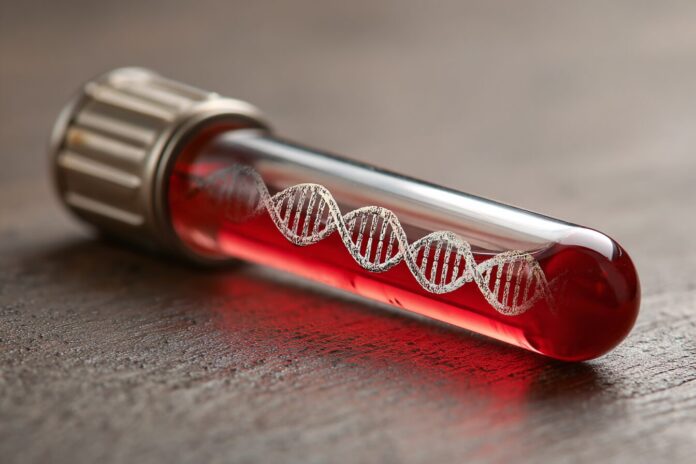Revolutionizing Early Cancer Detection
Early detection is one of the most powerful tools in the fight against cancer. Most importantly, recent scientific breakthroughs reveal that cancer DNA can be detected in blood samples years before a traditional diagnosis is made. This transformative research paves the way for earlier interventions, potentially saving countless lives.
Because early detection allows therapy to begin when the disease is less advanced, clinicians are now exploring new strategies that supplement traditional imaging with blood-based tests. Besides that, experts have demonstrated that liquid biopsy approaches could revolutionize how we view cancer screening, as seen in studies detailed on Johns Hopkins University Hub.
How Tumor DNA Reaches the Bloodstream
Cancerous tumors shed tiny fragments of genetic material, commonly known as circulating tumor DNA (ctDNA), into the bloodstream. Because these fragments carry distinct mutations, advanced sequencing technologies are capable of identifying them long before tumors reach a detectable size. Therefore, this method is proving to be a reliable indicator of the earliest stages of cancer development.
Moreover, this process explains why certain cancers that are hard to detect early on can now be identified with relative ease. Most importantly, understanding the pathway from tumor to bloodstream empowers researchers to refine these techniques further, as discussed on Fox News Health.
The Landmark Study That Changed Everything
A groundbreaking study conducted by researchers at Johns Hopkins University has demonstrated that tumor DNA fragments can be present in the blood up to three years before an official diagnosis. This revelation came after careful analysis of plasma samples from cardiovascular study participants, where measurable ctDNA indicated future cancer diagnoses. Because these findings challenge conventional diagnostic timelines, they are generating intense excitement within the oncology community.
Furthermore, the study’s rigorous methodology offers strong evidence that earlier detection is achievable. As highlighted in a report from Bioengineer.org, this discovery provides a promising foundation for integrating ctDNA testing into routine screenings, thereby accelerating the move toward personalized cancer care.
The Power of Multicancer Early Detection (MCED) Tests
Researchers have achieved remarkable progress using advanced Multicancer Early Detection (MCED) tests that employ next-generation sequencing on cell-free DNA. Because these tests analyze blood plasma for subtle genetic changes, they are capable of identifying cancer even before symptoms appear. Therefore, the predictive power of these MCED tests continues to receive validation through multiple studies.
In a controlled study comparing 26 individuals diagnosed with cancer shortly after their blood test to 26 cancer-free controls, the accuracy of the MCED tests was particularly striking. Most importantly, the tests proved able to forecast the emergence of clinical signs within four months, a breakthrough supported by additional insights published by The Independent.
Why Early Detection Matters More Than Ever
Early detection matters more than ever because it significantly influences treatment outcomes. Because catching cancers at an earlier stage permits the use of targeted therapies and often less invasive procedures, the overall survival rates for patients improve markedly. Transitioning from traditional detection methods to innovative blood tests may well represent the future of cancer management.
Most importantly, early intervention can truly transform the prognosis for diseases typically caught too late, such as pancreatic and ovarian cancers. Therefore, the healthcare community is rallying behind these developments, paving the way for a future where routine blood testing could become as common as cholesterol screenings. This significance is underlined in recent articles on Science Daily.
What This Means for the Future of Cancer Screening
These advancements signal a pivotal shift in the landscape of cancer screening. Because blood-based tests are increasingly accurate, routine clinical practices might soon incorporate them as standard procedures. This integration promises not only earlier detection but also the possibility of monitoring treatment efficacy over time.
Besides that, these innovations offer a new horizon for personalized medicine. Most importantly, as the accuracy and accessibility of these tests improve, we can anticipate a decline in late-stage cancer diagnoses. This paradigm shift is further reinforced by emerging research and clinical trials that are actively refining these technologies.
Challenges and Next Steps
Despite these exciting developments, challenges remain in the journey toward widespread implementation of liquid biopsy screening. Because false positives and technical limitations still exist, researchers emphasize the need for continuous refinement and validation of these tests. Most importantly, further studies are required to understand the implications of ctDNA mutations across diverse populations.
Furthermore, international collaborations and ongoing clinical trials are focusing on enhancing the specificity and sensitivity of these methods. Because overcoming these hurdles is crucial, there is optimism that technological advancements will soon address these issues, creating a more robust framework for early cancer detection.
Conclusion: A New Era of Hope
The discovery that cancer DNA is detectable in blood years before diagnosis marks the beginning of a new era in cancer care. Because early intervention can significantly reduce the severity of treatment and improve patient outcomes, both doctors and patients have renewed hope. Transitioning to these advanced diagnostic tools could revolutionize cancer treatment as we know it.
Ultimately, the melding of innovative research with practical screening techniques paves the way for a future where cancer is caught long before it becomes life-threatening. Most importantly, the rapid evolution of liquid biopsy technology inspires optimism for more precise and accessible cancer care, promising a future of improved survival rates and enhanced quality of life.
References
- Cancers can be detected in bloodstream three years prior to diagnosis
- Johns Hopkins study detects cancer in blood 3 years before diagnosis
- Breakthrough blood test detects cancer years before symptoms appear
- Johns Hopkins blood test detects tumor DNA three years early
- Bloodstream Tests Can Detect Cancers Up to Three Years Before Diagnosis



